If your organization is investing resources on advertising and lead nurturing to increase its lead conversion rates, this article is for you.
Many businesses aim to create successful lead capture strategies that generate countless, high-quality leads. Once accomplished, their marketing and sales teams are left to determine which are generic leads, marketing qualified leads, and sales qualified leads.
For more on these terms, check out our post on lost leads.
The risk of capturing too many prospects is that many organizations are unable to nurture them effectively. As a result, leads lose interest and stop engaging with brands.
While it’s inevitable that lead counts dwindle over time, you can prevent a majority of them from becoming unresponsive by taking note of the seven common mistakes businesses make.
7 Reasons Businesses Lose Leads
B2B leads can grow cold for a variety of reasons. Some never have the intention of becoming paying customers, while others lose interest in a product or service over time.
To successfully reattract leads, your team needs to understand and identify the common ways most businesses lose their hard-earned prospects.
Reason # 1: Asking for too much information
The first reason a business loses leads occurs before a consumer even becomes one.
Optimizing your lead capture forms for higher conversions requires striking a balance between the length of a lead form and the amount of information users are required to provide.
If a form is too long and requires a time investment that a prospect is not willing to give, they won’t complete the form and will abandon your page.
As a rule of thumb, the fewer fields a lead form has, the higher the likelihood a visitor will complete it. An exception to this rule is if they are offered an incentive to complete the form.
Reason #2: Sending too many emails
Once your marketing team has access to a new lead’s email, avoid over-communicating with them. This means not firebombing their inbox with generic or promotional emails. Not only is this unprofessional, but it also comes off as desperate and will not help nurture new leads.
What you want is to balance the amount of communication you have with them and the frequency with which you send them emails. You want your prospects to keep your business in mind, but you do not want to annoy them with your overbearing presence.

Reason #3: Not responding to communication promptly
In lead nurturing, timing is everything. Therefore, when your marketing or sales teams leave prospects with a question unanswered for too long, leads are less likely to convert. Marketers who follow up with their leads within 5 minutes of receiving an online request say leads are 9x more likely to convert.
Think about it this way. If you are interested in more information about a product that could make your manufacturing process more cost-efficient, you will contact the company that can sell it to you. If they take too long to reply, you will look for other alternatives because you want to solve your pain point as soon as possible.
In the same way, your leads are looking for what is beneficial to them. If you take too long to answer an inquiry, chances are they may go to a competitor who is faster with responses. You also run the risk of the prospect forgetting about your brand altogether.
Reason #4: Giving up too early
Another common mistake marketing and sales teams make is giving up on leads before they are ready to buy. Instead, they focus on those who are prepared to purchase the spot.
The reality is that 92% of marketers give up on a prospect after the 4th touch point. Keep in mind that 80% of leads will say no to an offer four times before they say yes and make a purchase.
When nurturing B2B leads, it is essential to remember that the initial person your business may speak to might not be the final decision maker – they may have to discuss purchasing decisions with someone else.
To avoid missing out on valuable leads, your team can agree on an average number of touch points prospects need and a timeline for your lead nurturing process.
To help decrease your timeline, you can send prospects a personalized email and attach marketing content that is proven to convert leads into customers.
Reason #5: Not focusing on one offer
Lead generation landing pages are a great way to pique prospects’ interest and focus on an offer. Whether it is a lead magnet, a free demo, or a free trial, every lead campaign should make it obvious what is offered. It should also have a clear CTA that encourages visitors to take a specific action.
However, when a landing page is not clear on its offers or gives too many options, site visitors may get confused and grow wary of completing the lead form.
The following is an example of a landing page that does not focus on a single offer.
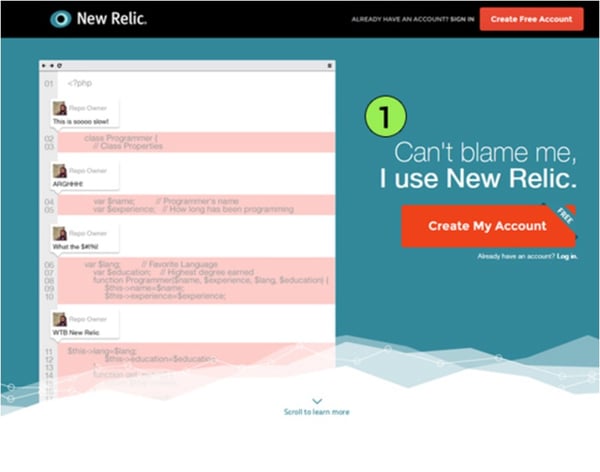
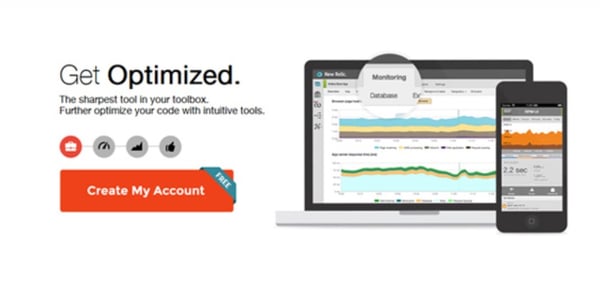
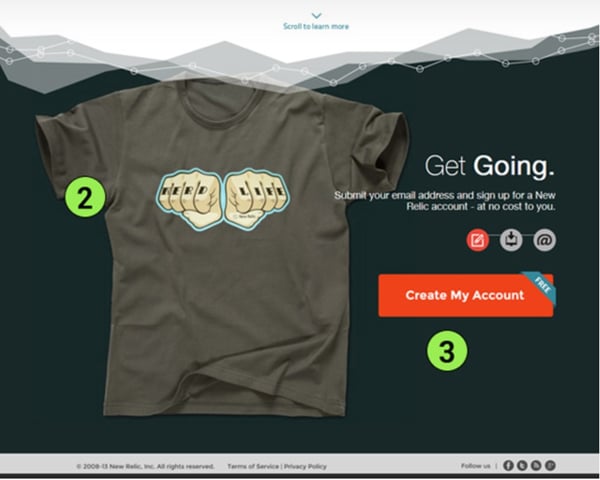
(Source: Unbounce)
In this example, the landing page appears to offer software and a t-shirt. Inconsistencies in a brand’s message only confuse potential leads and discourage them from submitting their information via a lead form. Why would someone trust a confusing landing page?
To solve this issue, be sure to provide your site visitors with consistent user experience. This means using the same headline in a paid ad and its corresponding landing page, featuring similar ad and landing page copy, and using related images, colors, and fonts.
Reason #6: Not fulfilling your promise in an ad and landing page
When a web user clicks on an online ad, they expect to learn more information about the offer it highlights. While this is usually the case, sometimes it does not happen, and users become suspicious of a brand’s legitimacy and frequently leave the web page.
To avoid making this mistake, ensure that the promises you make in your ad followed through on your landing page.
Moz provides a great example of ad and landing page consistency – both follow through on the promise of a free 30-day trial of Moz Pro.

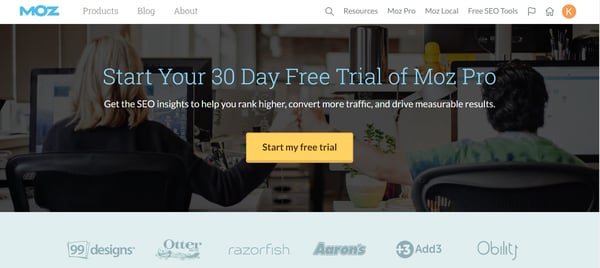
(Source: Moz)
Another mistake businesses make is over promise on what they can deliver. By overselling their capacity, organizations hype up their ability to deliver. In the end, they disappoint their prospects and customers.
Unfulfilled promises are dangerous because they can potentially ruin a business’s reputation and lead to financial loss or legal consequences.
To avoid this dire situation, always under promise and over deliver to keep your potential customers interested.
Reason #7: Not targeting the right offers to the right people
When an ad campaign, a landing page, or a series of emails do not give prospects content that hooks them into purchasing on the spot, businesses need to go the extra mile.
To ensure your lead generation and lead nurturing efforts are successful, make sure you offer the type of content users want and need.
To get the most of your campaigns, identify who your target audience is, and segment them into appropriate categories.
A proven way to segment your leads is by determining which stage of the buyer’s journey or client buying process a prospect is in. Once your marketing team has done this, it can decide which lead magnet offers can provide the most value based on the goals of each stage. This ensures you are not wasting time on misplaced offers that may not help your leads.
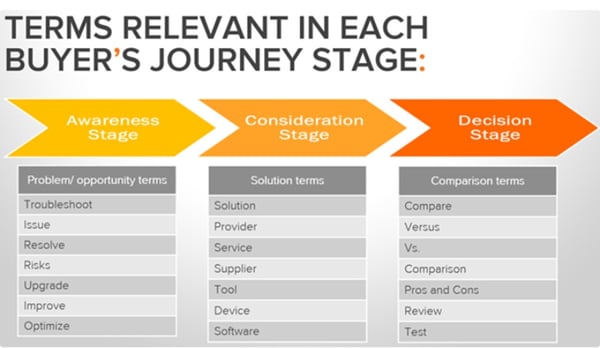
(Source: HubSpot)
Based on sales data collected, 19% of consumers want to contact a salesperson during the awareness stage of their buyer’s journey, when they are first learning about a product or service.
60% and 20% of prospects during the consideration and decision stages, respectively, are interested in talking to sales.
This means leads in all stages of the buyer’s journey show an apparent interest in communicating with a sales team. Not only that, but a salesperson can provide better user experience by presenting information and content that characterizes each stage’s pain points and interests.
Stop losing leads
Every business loses leads throughout the lead nurturing process. However, your marketing and sales teams can significantly reduce the percentage of overall prospects that go cold by recognizing and taking steps to avoid common mistakes.
By positioning your campaigns as legitimate and reliable, and creating reasonable customer expectations and following through with them, leads will feel more comfortable and satisfied with your brand. When this happens, your organization is less likely to lose out on valuable sales opportunities.



